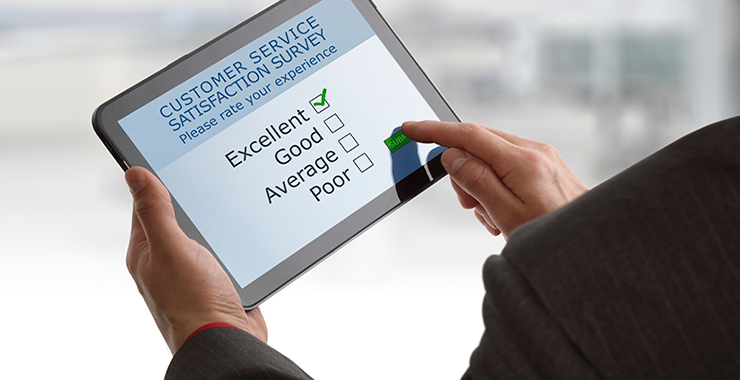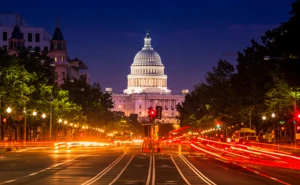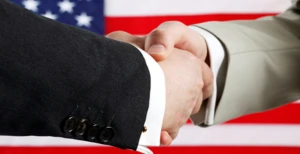
Government Customer Service: Lead the Campaign to Improve Public Perception
In a new Government Business Council Report titled The Path to Customer-Centric Service, 67% of surveyed federal managers say their organization’s service is on par with that of the private sector. But, according to leading consumer surveys, customer satisfaction ranks near the bottom of a cross-industry comparison.
According to the American Customer Satisfaction Index (ACSI), a leading cross-industry consumer survey, citizen satisfaction with federal services overall is at an eight-year low, with satisfaction scores averaging 64.4 out of a possible 100. Customer service specifically garnered a rating of 75 out of 100, which is comparatively good, but down five points from the rating of 80 where it’s stood consecutively since 2012.
What’s Causing the Drop in the Polls?
What’s causing the drop in customer service polls, even as most agencies have been making strides over the last several years to improve? Public perception driven by recent media stories around disappointing service certainly hasn’t helped. But, referring back to the Government Business Council Report, many agencies, while believing they’re on par when it comes to customer service, may be in the race, but still aren’t competing with the front runners.
Why? A big reason is because they’re not listening to and acting upon what their customers want or need.
Customer Service of the People, by the People, for the People
When it comes to government customers (whether that’s the public, other agencies, private sector businesses or organizations or internal customers), knowing who they are and what they want shapes not only service and information delivery, but the perception of satisfying service.
In the GBC report, 47% of respondents agreed or strongly agreed that their organization currently does a good job of soliciting customer feedback which is pretty good. Yet, 35% say their currently integrate customer data to improve the customer experience, and only 24% use analytics to define customer segments.
Going further down the customer-centric path, just 14% analyze social media to understand public attitudes; only 15% use a CRM system; 32% prioritize improvements to high-impact customer interactions and only 15% align employee incentives with customer-centric service. Eight percent (8%) are using crowdsourcing to solve challenging problems, and 16% say they are currently taking none of the actions highlighted in this paragraph.
Less than half of the managers surveyed (42%) said their agency uses quantitative metrics to track customer service performance. Worse yet, 37% don’t know.
What Needs to Change?
While customer expectations have increased (56% have higher expectations for customer service now than a year ago), along with the technology to empower customers to engage with, request, search for, complain about or praise service in real time, the same problems still exist on the agency and employee side that keep most government customer service teams from keeping pace. Budget constraints (55%), outdated systems and technologies (45%), cultural resistance to change (38%) and lack of proper training (35%) round out the top obstacles cited when it comes to improving customer service quality.
Add to this that customer service departments are among the least engaged employees across all verticals, private or public sector, (2015 Employee Engagement Trends Report), and the campaign to become a leader in service becomes even more challenging (but even more rewarding when improvements and a more customer-centric culture are achieved).
A Place to Start
Many government agencies have found a successful place to start in improving customer service is through knowledge, which serves two key purposes. Delivered correctly, it provides more, better, better organized and searchable self-service information to customers.
This not only improves satisfaction, but deflects a high volume of frequently-asked questions from assisted service channels such as phone and email so that customer service employees can focus more on performance metrics, customer data and feedback, improved assisted service response times and other activities that allow agencies, teams and employees to become more customer-centric.
Secondly, by providing that same and/or better knowledge to employees, this assists with training, consistency of information across agents, teams and channels, improved first contact resolution and typically results in cost-savings that can be applied to moving into the leaders’ race when it comes to government service and support.
From Dark Horse to Front Runner
The above statistics show key areas in which many government agencies have opportunities to improve, as well as lead. In the 2016 customer service polls, where will your organization and government customer service stand?
————————————–
4 Resources to Help Start Your
Customer Service Campaign
- 1. On August 26th, join Microsoft (gold sponsor) and Susie Adams, CTO for Microsoft federal, at the DGI Government Customer Service Conference in Washington, DC.
- 2. Download the 2015 U.S. State of Multichannel Customer Service Report to view current customer expectations and preferences.
- 3. Download the white paper from analyst Esteban Kolsky, Justifying Knowledge Management in Customer Service.
- 4. Watch a pre-recorded webinar on the customer satisfaction and cost-savings impact of knowledge management for customer service featuring industry analyst Esteban Kolsky, Ask.com Global Customer Care Manager Eric McKirdy and Microsoft’s Bill Patterson. Click here.



